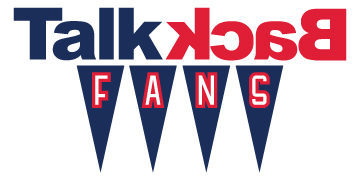Today I’m going to solve the biggest problem in the world today. I’m going to fix every football fans problems and deliver the best solution to the College Football Money Grab Playoff. It takes two years to get this going, so just be patient.
First get the FBS to 128 teams. We’ll break them down regionally and via blind draw – shown live . . .ON FOX!! – get them into 32 groups of four. You play each team once, top two in each group advance. No overtime, either, so ties can happen. Tie breakers are head-to-head, scoring differential, total points scored, coin flip. If you think this is a lot like the World Cup or Champions League you are correct. But wait, there’s more!!
The next thing we do is take those 64 teams and again, blind draw – this time on the Telepathy Channel – and get them into 16 groups of four and repeat the process. Now, you’re probably wondering what the eliminated teams do. They can schedule as many other games as they want once they are eliminated. If you’re thinking people won’t go to these games, just watch an Ohio State/Tulane matchup.
Now that we are down to eight groups of four, the only difference is that this time only the winner of each group advances to the quarter-finals. Again it’s a blind draw for each matchup, we’ll add in the overtime rules so that we don’t get byes – though Air and I would love it – and there is a redraw for the semi-finals.
OK, now onto Year Two. We will start this time with 96 teams and break them down into 32 groups of three. The teams that reached the last 32 the previous year automatically move on to the second round. The 96 are drawn out like we originally did, and then the schedule goes like this:
Team A vs. Team B
Loser of A/B vs. Team C
Winner of A/B vs. Team C
This way every week is meaningful. The winner of each group advances to join the other 32. Then we repeat what we did in Year One.
The advantages to this system:
- No one is excluded. No more whining about who didn’t get in, because everyone is in.
- The live televised blind draws mean no subjectivity, no rankings.
- Gone are the mega conferences. No more Pac 50 or Big 35 or any of that.
- The most games any team will play is 12, not a daunting number.
- Should the committee take this approach, what little control the NCAA has will now be all but vanished.
The disadvantages:
- Traditional rivalries will fade away.
- Conferences now become a thing of the past.
- Smaller schools may not get the same payoffs they are getting now travelling to the big schools.
- The gap between the haves and the have nots will become increasingly wider.
But that third point is already happening. The idea that expanding the field helps the little guys is utterly ridiculous. None of them have the depth, let alone enough front line talent, to compete year-in and year-out as is. When was the last time a school from “football royalty” didn’t finish #1? That would be the BYU Cougars in 1984. During the BCS era Boise St. and TCU got close, but never got over the hump.
This method doesn’t discriminate from conference affiliation. There are no computers determining who fits in where. Just go out and play. No more conference championship games, no rankings, no more arguments over “Who’s #4” or “Who’s #8”. The system is objective, transparent, and simple. No formulas that need to be explained.
